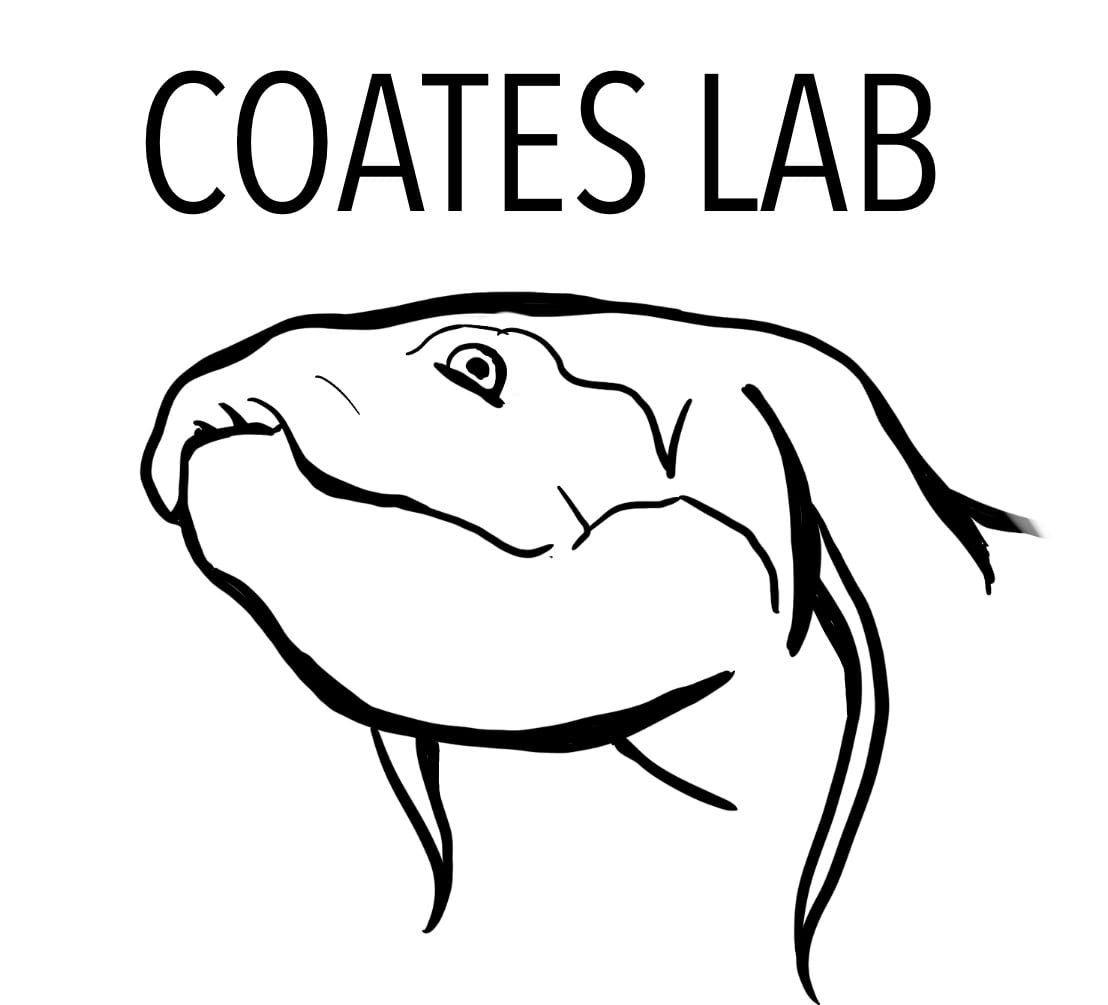Tetrapods (four-limbed vertebrates with digits) originated in the Late Devonian period c.375 million years ago, and today encompass tens of thousands of species. Fossils of Devonian tetrapods and sarcopterygian (“lobe-finned”) fishes closely related to them have been known for over a century. However, the fish-tetrapod transition, as well as that between Devonian tetrapods and later Carboniferous and Permian forms was unclear for much of the 20th century. The re-analysis of Devonian tetrapods such as Acanthostega [Coates 1996] and the discovery of new ‘transitional forms’ like Tiktaalik [citations?] has greatly helped our understanding of the origin of tetrapods. New discoveries have also helped populate the earlier part of tetrapod history in the Late Devonian and Early Carboniferous. Interdisciplinary work by lab members with international collaborators has also helped fill in ‘Romer’s Gap,’ a hiatus in the fossil record immediately after the end-Devonian extinction.
However, questions still remain. The age of the tetrapod crown group (amphibian/amniote split) have been broadly agreed upon for the last 15 years [Marcello]. But recent work, making use of new datasets and technologies, has produced very divergent phylogenetic hypotheses and crown group age estimates. At the same time, morphological studies, many of which have made extensive use of CT scanning, have both described new taxa and extracted new data from old fossils. It is clear that early tetrapods were more complex than previously considered.
Current lab research on tetrapods falls into several key areas. Our morphological work is focused on not only understanding individual tetrapod taxa, but also on establishing them within a broader comparative context, in order to better discern patterns of change (or lack thereof.) CT scanning and 3D surface scanning have allowed us to acquire information that would otherwise be impractical or inaccessible. Our phylogenetic work makes use of the resulting new information to build a new dataset and take a whole-evidence approach to tetrapod phylogeny, incorporating a rich sample of both characters and taxa. Finally, we are investigating tetrapod ecology from their origin in the Late Devonian through the Carboniferous. Coupled with the morphological and phylogenetic work, this will allow us to test various hypotheses about the influence of ecology on the origin of tetrapods, water-land transition, and amphibian/amniote split, as well as the establishment of terrestrial communities more broadly.
[Author notes 1/30:
- The writing ain’t fantastic, I know
- How long should these be? My intuition is that some kind of roughly standard length (250 words? 500 words?) would make sense and keep things feeling even, even if each one isn’t the same down to the letter. Don’t want to give the impression that some things are less important than others
- Do we want to do citations? If so I think we should try to tilt it toward our own stuff as much as possible (it’s our lab website after all, and we don’t get kickbacks for handing out free promo)
- Pictures?
- What level exactly are we pitching this at? How much glossing?
- “Morphology” vs “anatomy”
- We’ll have to watch these (and the site in general) for repetition/redundancy, both in terms of content and words/phrases; some is good, but too much is going to feel schlocky
